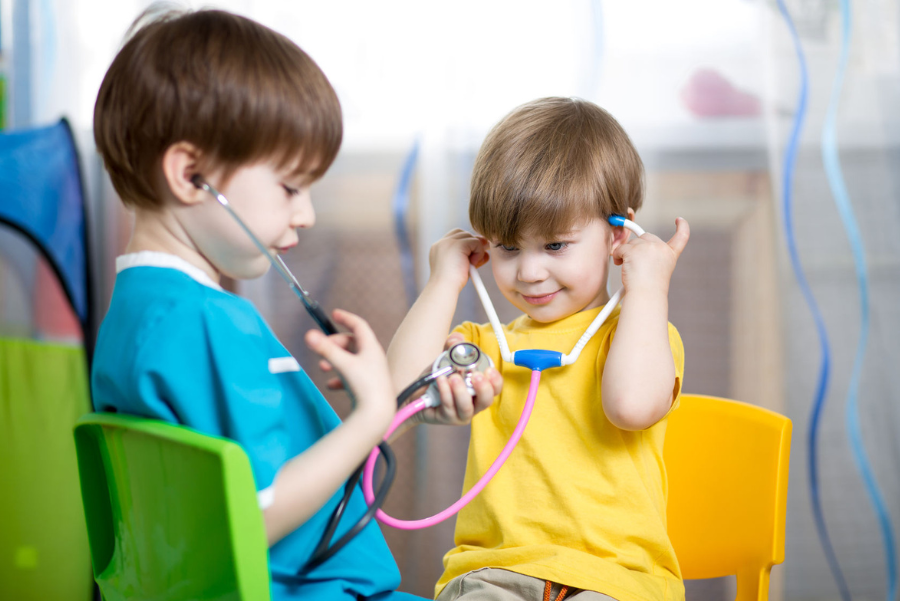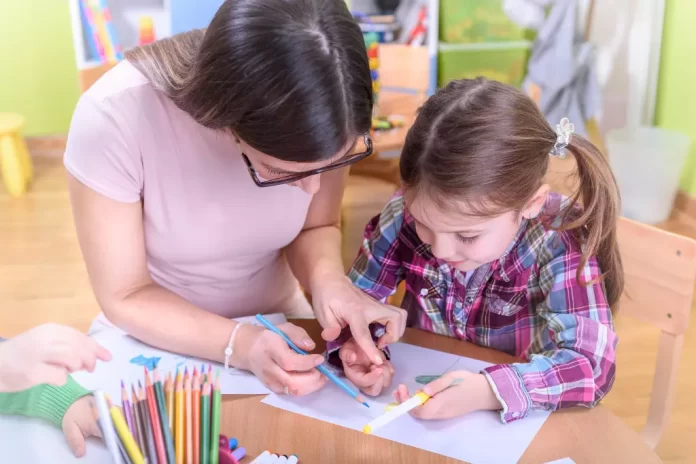In today’s fast-paced world, children are exposed to a wide range of emotions from an early age. Helping them develop effective emotional regulation skills is crucial for their overall well-being and success in life. Emotional regulation refers to the ability to recognize, understand, and manage one’s emotions in a healthy and constructive manner.
This comprehensive guide will explore various activities designed to improve emotional regulation in children, along with a detailed comparison table and a frequently asked questions (FAQ) section. We’ll also provide valuable insights, recommendations, and trusted resources to help you navigate this essential aspect of child development.
READ ALSO : The Ultimate Guide to Free Online Mindfulness Exercises for Beginners: Discover Inner Peace and Tranquility
Why is Emotional Regulation Important for Children?
Emotional regulation plays a vital role in a child’s overall development. When children can effectively regulate their emotions, they are better equipped to:
- Develop strong social skills: Children with good emotional regulation are more likely to form positive relationships with peers and adults, as they can navigate social situations with greater ease and empathy.
- Improve academic performance: Emotional regulation helps children focus better in the classroom, manage stress, and approach challenges with a positive mindset, all of which contribute to academic success.
- Foster mental well-being: Children who can regulate their emotions are less prone to emotional outbursts, anxiety, and depression, leading to improved overall mental health.
- Build resilience: Effective emotional regulation equips children with the tools to cope with life’s challenges and setbacks, fostering resilience and perseverance.
Top Activities to Improve Emotional Regulation in Children
- Mindfulness and Deep Breathing Exercises
- Teach children simple breathing techniques, such as belly breathing or square breathing, to help them calm down and regain focus.
- Introduce mindfulness practices like body scans, where children tune into their physical sensations and emotions.
- Resources: Mindful Schools, Calm App for Kids
- Emotion Charades or Emotion Bingo
- Play games where children have to identify and act out different emotions, promoting emotional awareness and understanding.
- Create emotion cards or bingo boards with various facial expressions or scenarios.
- Resources: Emotional Charades Game, Emotions Bingo
- Emotion Journaling or Art Expression
- Encourage children to express their emotions through writing in a journal or creating art pieces.
- Provide prompts or scenarios that allow them to explore different emotions and coping strategies.
- Resources: Emotion Journal for Kids, Art Therapy for Children
- Storytelling and Role-Playing
- Read books or tell stories that explore different emotions and how characters navigate them.
- Engage children in role-playing activities where they can practice regulating emotions in various scenarios.
- Resources: Books for Emotional Regulation, Role-Play Activities for Kids
- Yoga and Movement Activities
- Incorporate yoga poses and movements that promote self-awareness, focus, and stress relief.
- Use movement activities like dance or freeze dance to help children express and release emotions.
- Resources: Cosmic Kids Yoga, GoNoodle Movement Videos
- Emotion Sorting and Categorization Games
- Create games where children sort emotions into different categories, such as “happy,” “sad,” or “angry.”
- Use visual aids like emotion cards or pictures to help children identify and categorize emotions.
- Resources: Emotion Sorting Game, Emotion Categorization Activities
- Problem-Solving and Coping Strategies
- Present children with hypothetical scenarios or real-life situations and guide them through problem-solving steps.
- Teach them various coping strategies, such as deep breathing, positive self-talk, or seeking support.
- Resources: Problem-Solving Activities for Kids, Coping Skills for Kids
- Emotion Thermometer or Emotion Scale
- Create a visual aid, such as a thermometer or a scale, to help children identify and rate the intensity of their emotions.
- Encourage them to use this tool to communicate their feelings and develop self-awareness.
- Resources: Emotion Thermometer Activity, Emotion Scale for Kids
These activities can be incorporated into daily routines, classroom settings, or family time, providing children with valuable opportunities to develop emotional regulation skills. Remember, consistency and reinforcement are key to helping children internalize these strategies effectively.

Comparison Table: Emotional Regulation Activities
To help you choose the most suitable activities for your child or classroom, we’ve compiled a comprehensive comparison table:
| Activity | Age Range | Materials Needed | Skills Targeted | Time Required |
|---|---|---|---|---|
| Mindfulness and Deep Breathing Exercises | 4+ | Minimal (optional: videos, guided audio) | Self-awareness, focus, stress management | 5-15 minutes |
| Emotion Charades or Emotion Bingo | 5+ | Emotion cards, bingo boards | Emotion identification, empathy | 15-30 minutes |
| Emotion Journaling or Art Expression | 6+ | Journals, art supplies | Self-expression, emotion recognition | 20-45 minutes |
| Storytelling and Role-Playing | 4+ | Books, props (optional) | Perspective-taking, problem-solving | 15-30 minutes |
| Yoga and Movement Activities | 3+ | Yoga mats (optional), music | Self-regulation, stress relief | 15-30 minutes |
| Emotion Sorting and Categorization Games | 4+ | Emotion cards, sorting containers | Emotion identification, categorization | 10-20 minutes |
| Problem-Solving and Coping Strategies | 6+ | Scenario cards, visual aids | Problem-solving, coping skills | 20-40 minutes |
| Emotion Thermometer or Emotion Scale | 5+ | Thermometer or scale visual aid | Self-awareness, emotion regulation | 10-20 minutes |
Please note that the age ranges provided are approximate guidelines, and children may respond differently based on their individual development and abilities. It’s essential to adapt these activities to meet the specific needs of your child or classroom.
Frequently Asked Questions (FAQ)
- Q: How often should emotional regulation activities be practiced?
A: Consistency is key when it comes to developing emotional regulation skills. Aim to incorporate these activities into your child’s routine at least a few times a week, if not daily. Regular practice helps reinforce the strategies and makes them more effective. - Q: Can emotional regulation activities be done with a group or only individually?
A: Many of these activities can be adapted for group settings, such as classrooms or playdates. Group activities can foster empathy, perspective-taking, and social-emotional learning. However, individual practice is also important to allow children to focus on their personal experiences and emotions. - Q: How do I know if my child is making progress in emotional regulation?
A: Look for signs such as improved self-awareness, better ability to communicate feelings, fewer emotional outbursts, and more effective coping strategies during challenging situations. It’s also helpful to seek feedback from teachers or caregivers who interact with your child regularly.
Conclusion
Developing emotional regulation skills in children is an invaluable investment in their overall well-being and future success. By incorporating the activities outlined in this guide, you can provide your child with the tools they need to navigate the complexities of emotions and build resilience.
Remember, emotional regulation is a lifelong journey, and consistency and patience are key. It’s important to create a supportive environment where children feel safe to express and explore their emotions without judgment.
Encourage open communication, celebrate small victories, and seek additional support from professionals if needed. With time and practice, your child will develop the ability to recognize, understand, and manage their emotions in a healthy and constructive manner.
Embrace this journey as an opportunity to foster a deeper connection with your child and equip them with the essential skills they need to thrive in all aspects of life. By prioritizing emotional regulation, you are empowering your child to build meaningful relationships, overcome challenges with resilience, and cultivate overall mental well-being.


